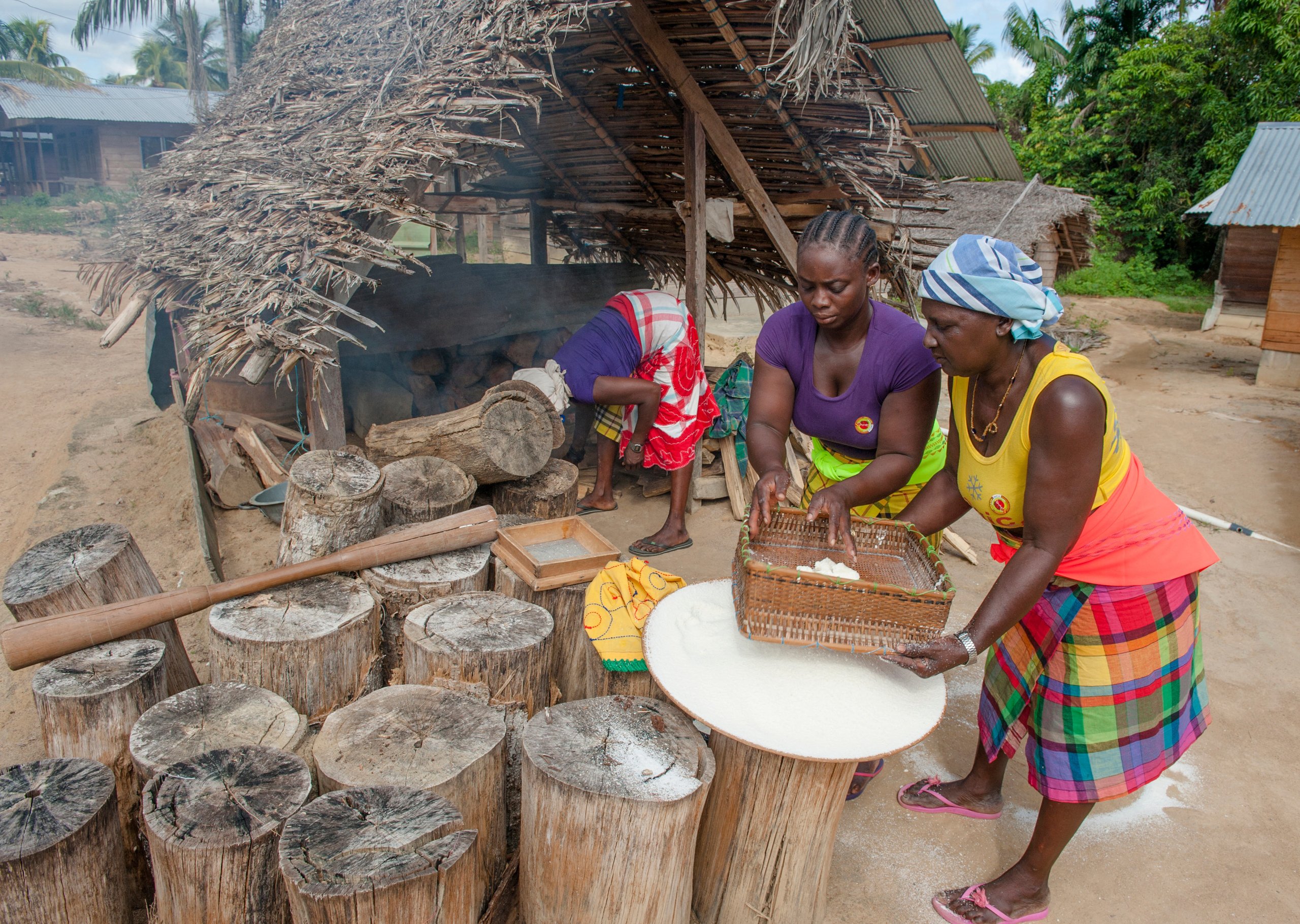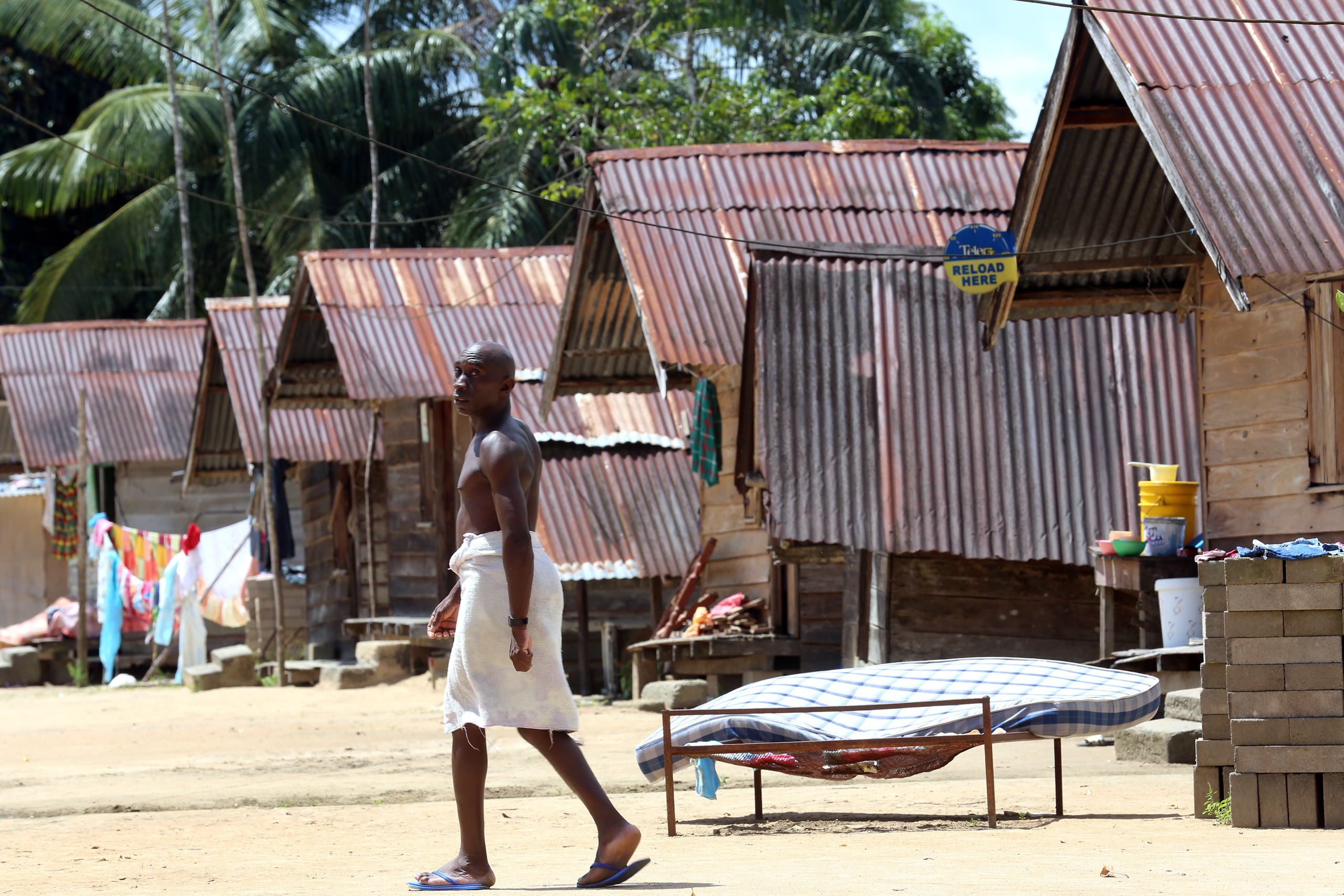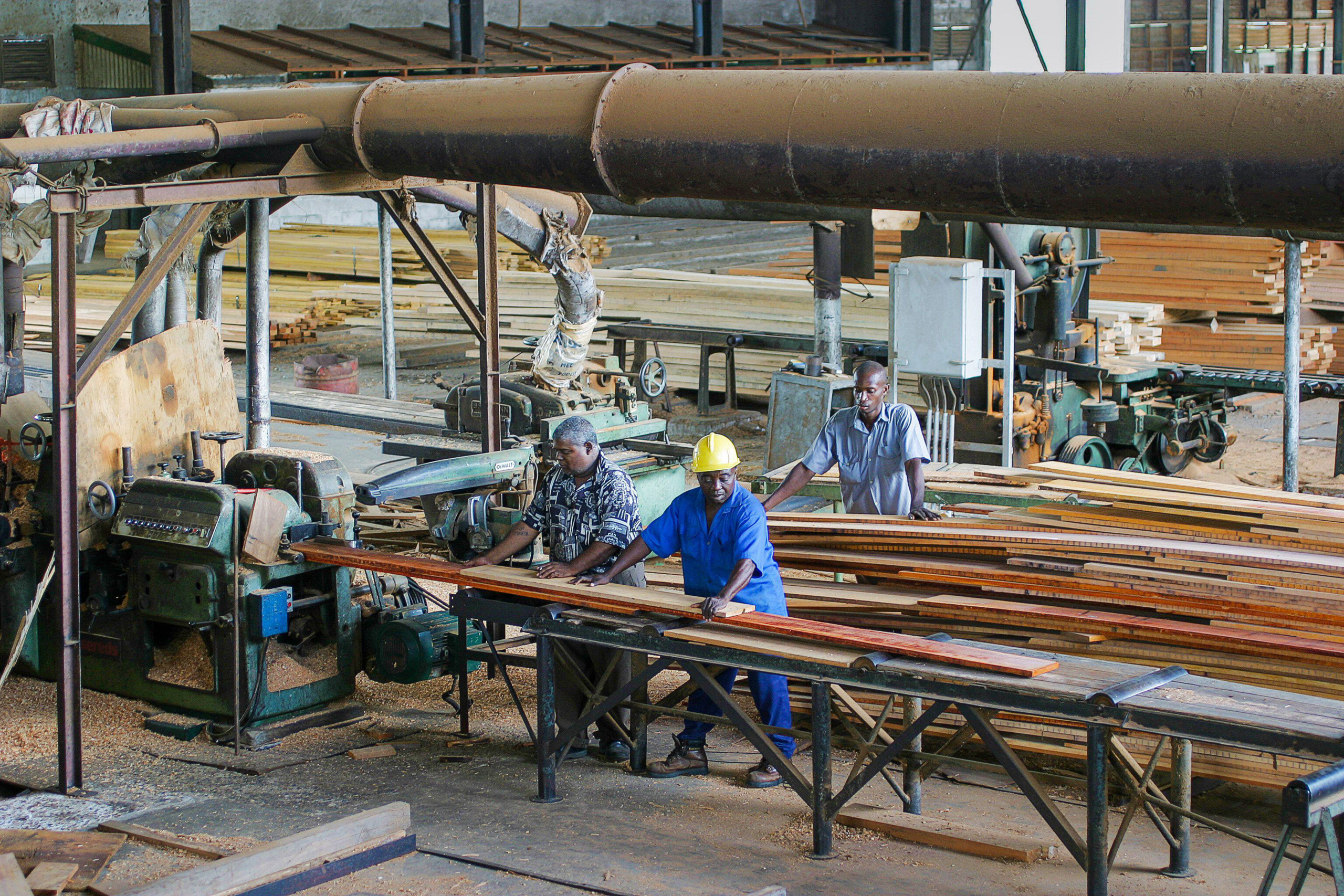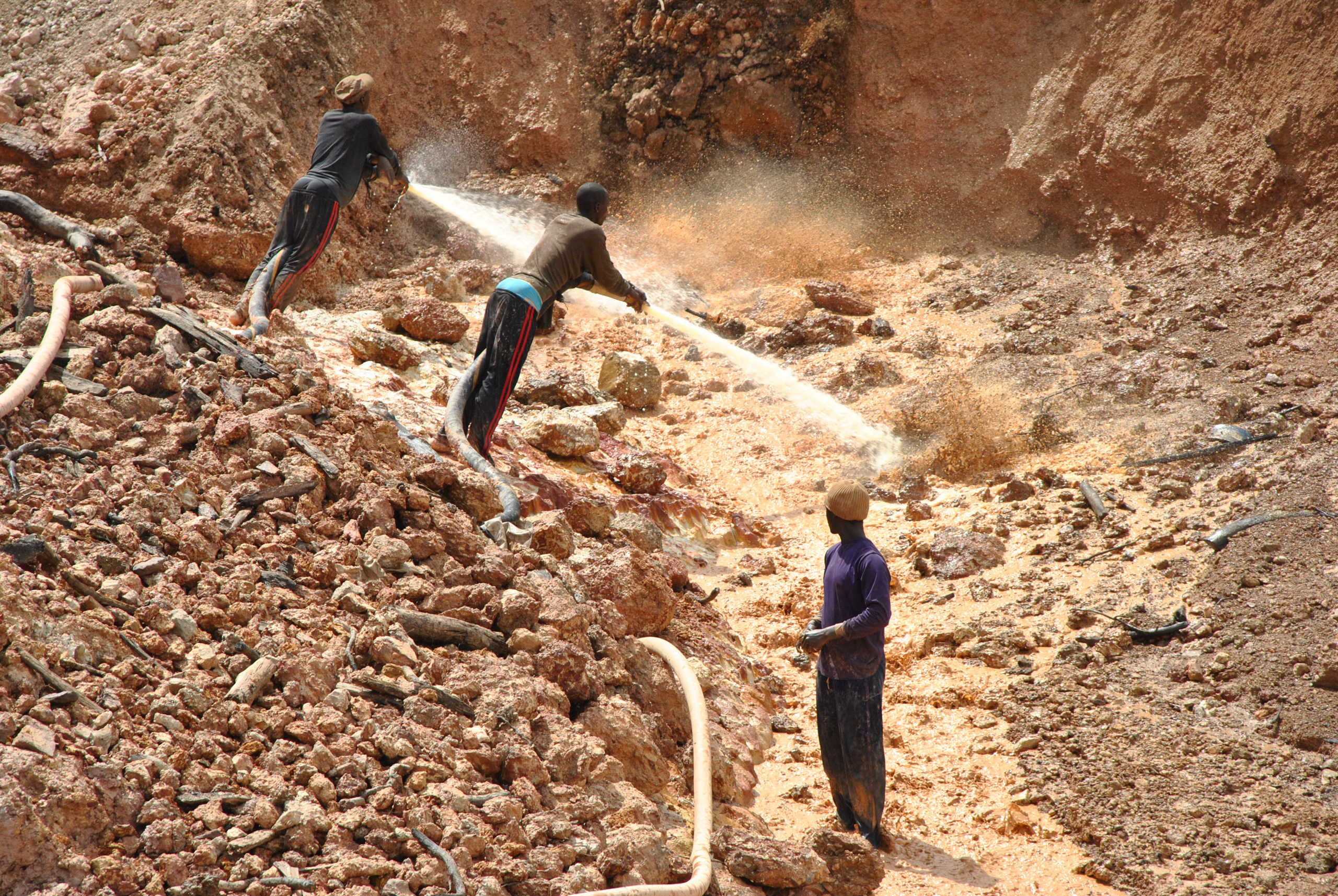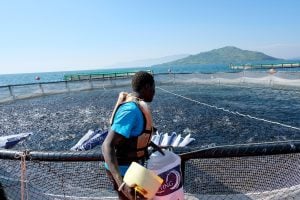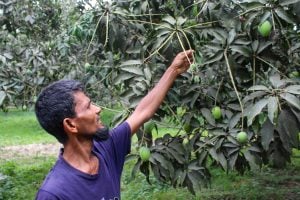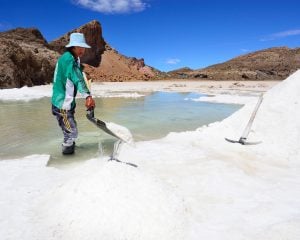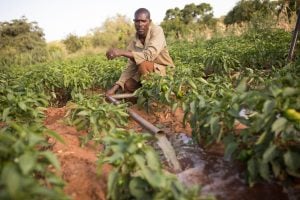Ever since Suriname’s independence from the Netherlands nearly fifty years ago, the country’s Indigenous and tribal people have been fighting to have their land rights recognised.
“We are the original inhabitants of the country and our rights must be protected,” said Sergio Jubithana, at a press conference with the Association of Indigenous Village Chiefs in Suriname (VIDS) in February. He is the chief, or kapitein, of Hollandse Kamp, an Indigenous village in the northern district of Para, within which timber concessions have been issued by the government.
“It is unfortunate to see how we are being treated. But we are no longer going to accept our rights being trampled on,” Jubithana added.
Suriname is the only remaining country in South America that has yet to enshrine Indigenous land rights in its constitution. This is despite a landmark ruling handed down by the Inter-American Court of Human Rights in 2007 in favour of the Saamaka tribe, which filed a case against the state alleging that concessions were issued in their homelands without their consent.
Though their case was won 17 years ago, it is still unclear when the country’s draft law of collective rights for Indigenous and tribal people, which will protect and regulate the land rights of the Saamaka and other groups, will be approved by the national assembly, having first been submitted in 2021. In recent years, tensions between such communities and the government have escalated amidst continued concessions to gold and timber companies in their claimed territory, which they say have impacted their livelihoods and traditional ways of living.
The challenges of being unrecognised
According to the most recent census in 2012, about 20,000 Indigenous people were reported to live in Suriname, residing in more than 50 villages and making up nearly 4% of the total population. As their territories are still not legally recognised, it has proven difficult for them to develop local infrastructure such as schools and hospitals, or enter into financial agreements with banks or investors to start businesses.
Suriname’s Maroons, meanwhile, face similar challenges. The descendants of Africans who escaped from slavery in South America, Maroons are the country’s second-largest ethnicity, with their 120,000-strong population living mostly in villages in the northern and southern districts of the interior, away from the main urban centre and port, the capital city Paramaribo.
The Saamaka are one of six Maroon tribes of Suriname. Like many other traditional communities, they have long faced threats from mining and timber activities, including forced displacement and pollution of sources of drinking water.
Furthermore, as these activities have been carried out through concessions, these areas have become off-limits to Indigenous people for traditional subsistence activities. “We live off our boarding grounds [agricultural land] and the men in the village have to make a living from hunting and fishing,” says Chevani Kassels, president of a women’s organisation in Pikin Saron, an Indigenous village in northern Para district. “If they issue all our forests as concessions, how are we supposed to survive?”
In May 2023, anti-government protests in Pikin Saron turned into a riot in which two people were killed. Demonstrators had expressed unhappiness over their lack of land rights. Amidst high unemployment rates, locals also voiced dissatisfaction with state mining company Grassalco, over what they say were unkept promises of work opportunities at a gold mine in their village, located in the concession area.
“After the 2 May riots, nothing has changed. We are still living in poverty. There is no employment for the men in the village, so it is difficult for them to support their families,” says village council member Angela Zaalman. She claims concessions are still being issued, and expired concessions renewed, despite the country’s president, Chan Santokhi, promising otherwise after the riots. “There are dozens of timber trucks passing by here every day, right in front of our noses, but the development of our community is lagging behind.”
Maroons’ struggle
All six tribes of the Maroons, including the Saamaka, have largely retained their traditional way of life, and similar to the country’s Indigenous groups, mostly live off hunting, fishing and ancestral medicine. Decades of discrimination in various areas such as education and employment have contributed to Indigenous people and Maroons being among the most disadvantaged groups in the country: three quarters of the Maroon population was classed as being impoverished in a 2020 baseline study by VIDS.
Almost all Indigenous and Maroon villages are financially dependent on state subsidies to implement local infrastructure and construction projects. According to the VIDS study, nearly two thirds of the country’s Indigenous population live in poverty and are deprived of quality education, healthcare, electricity and drinking water. In many parts of the country, river water is polluted by mercury used in gold-mining activities, largely conducted by big companies, forcing some villagers to uproot.
In the Maroon village of Nieuw Koffiekamp, some 100 km south of Paramaribo in Brokopondo district, residents describe a prevailing feeling of helplessness.
Since 1994, the village has been drawn into a gold mining concession area first acquired by Canadian gold mining firm Golden Star Resources, and residents resisted an initial attempt by the government to relocate them. Conflict and intimidation of villagers is alleged to have continued for years, and tensions are said by monitoring NGOs to have persisted, even as the mine’s ownership has changed hands multiple times. Rosebel Gold Mines was established in 2002 as Canadian miner Cambior took over from Golden Star; Cambior was itself acquired by fellow Canadian firm Iamgold Corporation in 2006, before Rosebel was acquired by Chinese company Zijin Mining Group in 2023.
Chester Darius, a village youth leader who participated in the protests, says that young villagers are now demanding priority for jobs at the company’s local gold mine, given the impact mining activities have had on their daily lives.
“Young people in the village don’t have jobs. That is why we are sitting here looking at each other [and doing nothing],” says Darius. “We expect the government to step in before protesting escalates,” he adds.
Activists from Nieuw Koffiekamp also called for Zijin Rosebel Gold Mines to allow villagers to engage in small-scale mining in inactive areas belonging to the company’s concession where no gold mining activity is currently taking place, and that the company pave the poorly maintained road leading to their village.
Despite further protests by the villagers in January, “nothing has been settled”, says Darius. “We are counting on the company to accommodate us, otherwise we will take action again.”
Rosebel Gold Mines and Grassalco were approached by Dialogue Earth for comment on the protests, but no response had been received at the time of publication.
Government figures show that gold makes up more than 80% of Suriname’s total exports, while mining accounts for just over 30% of public sector revenue. While no official figures have been released for timber, much of it is exported as roundwood, or timber in log form.
Given these figures, the recognition of land rights is a lasting solution to the injustices faced by inland inhabitants that “will make the natives and tribals no longer dependent on the government”, says Ruben Ravenberg, secretary of A Marron Kompas (A Maroon Compass), an foundation campaigning for the sustainable development of Suriname’s interior.
Legal recognition: a long history
Though there has been a flurry of protests in recent months for legal recognition of Indigenous land rights, the push for such protection has a long history, dating back to the country’s independence in 1975. Since then, the former Dutch colony has seen regular action by inland residents for recognition of their territory.
One of the first actions raising awareness of the land rights issue happened just a year later. A December 1976 protest march saw Indigenous men belonging to Kano, an activist group representing the Kaliña and Lokono people, walking nearly 140 kilometres from the border town of Albina to Paramaribo.
In the years since, however, successive decrees and laws have only served to bring into state ownership all of the country’s forests and natural resources, including areas inhabited by Indigenous and Maroon communities. The government has also announced intentions to turn several hundred thousands of hectares of forest into agricultural land, which has seen activists and environmental organisations raise concerns in response. The small South American country is often described as the most forested country in the world, with forest covering over 90% of its land area.
In November 2015, eight years after the Saamaka verdict, the Inter-American Court of Human Rights ruled in favour of Kano and the Indigenous peoples of Suriname, in a case that found the state guilty of violating its human rights framework by preventing the peoples from accessing parts of their historical lands. Both rulings ordered the state to recognise the land rights of Indigenous people and Maroons within 18 months. Nearly 10 years after the last ruling, however, Suriname has yet to implement that order, nor has any official statement been issued on the matter.
Today, the fight continues. “The most important thing we want is the recognition of our land rights. After that, we can and will develop our territories,” says Hugo Jabini, a legal expert and member of the Saamaka Community Association. He was one of the key figures responsible for bringing the Saamaka case to court. He says his organisation will soon begin a nationwide awareness campaign reemphasising the importance of land rights to Indigenous and tribal communities.
“It is going to be difficult, but we are obliged to continue with this struggle,” Jabini adds.
